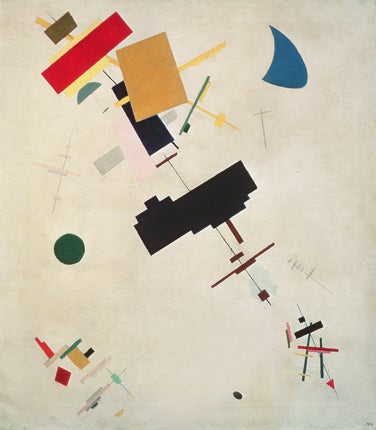The nouveau fakes: Russian avant-garde forgeries
The country's new rich have millions to spend – and are falling victim to an age-old ruse, says Andrew Johnson

They are paintings created in the crucible of social turmoil, their sharp blocks of colour and abstract geometric forms signifying a bold new direction in art and society.
The avant-garde works by the likes of Malevich, Popova, Kandinsky and Goncharova are attracting bigger and bigger prices at auction – last year Goncharova became the highest-selling female artist – and decorate the mansions of Russia's oligarchs and new business elite. There is just one problem. Most of them are fakes.
Such is the popularity of the revolutionary art movements such as Constructivism and Suprematism, which spread through Russia in the early part of the 20th century, that forgers are glutting the market. Art experts estimate that at least 50 per cent, and as many as 80 per cent, of works offered for sale in a market worth millions of pounds are forgeries.
For years, their artists – who believed that art should have a social, rather than purely decorative purpose – have been largely forgotten. Now Russia's new rich have rediscovered the Russian avant-garde, and have turned it into one of the most lucrative art markets in the world.
But William MacDougall, of the specialist London Russian auctioneers MacDougall's, said that more than half of the works submitted to his auction house are fakes. "It's a particular problem with Russian art," he said. "There are wealthy people who have made great mistakes. Your typical Rembrandt collector would have started at a young age with etchings, then moved on to lithographs and would have 25 years' experience before buying an oil painting. A Russian collector has a £100m fortune, aged 35, and starts buying a great deal at once. The prices are huge, big enough to motivate dishonest people."
He added: "There are more fakes around than genuine works. Half of the work we receive we reject on grounds of authenticity. The most difficult period to authenticate is the avant-garde art of the 1920s."
Peter Aven, president of Moscow's Alfa-Bank and one of the country's biggest collectors of avant-garde art, told ARTnews magazine that the number of fakes on the market was "colossal": "Russian buyers have entered the market, and the new demand has provoked a wave of fakes."
But it's not just avant-garde artists who are being forged. The demand for Russian work saw the auction house Sotheby's embarrassed in 2004 when it put up for sale a landscape by the 19th-century artist Ivan Shishkin, only for it to be revealed to be a Dutch painting in Shishkin's style that had been touched up by a forger.
One of the problems is that Russian works do not have the same documentation – proving their history from their first sale onwards – as many Western paintings from the same era, said Dr Nicholas Eastaugh, whose Art Access and Research company uses the latest scientific techniques to examine the materials used in paintings.
"I've been doing a lot of work on Russian art over the last two years, and there are a lot of fakes around," said Dr Eastaugh. "People are trying to buy their national heritage. The key works are from 1910 to the 1920s. There was a lot of chaos. Many works were destroyed afterwards or sent to remote provinces, which means documentation is poor. So looking into the history is problematic."
Join our commenting forum
Join thought-provoking conversations, follow other Independent readers and see their replies
Comments